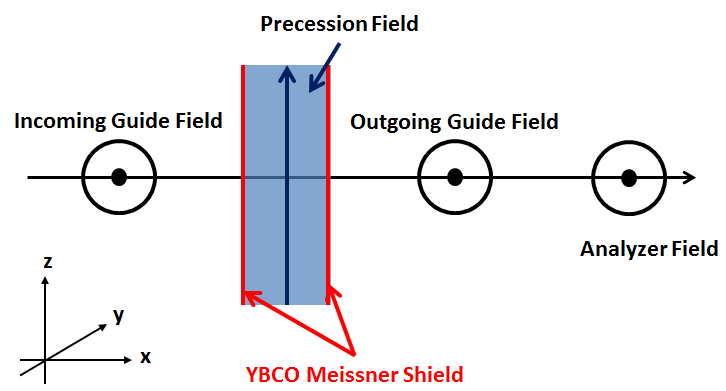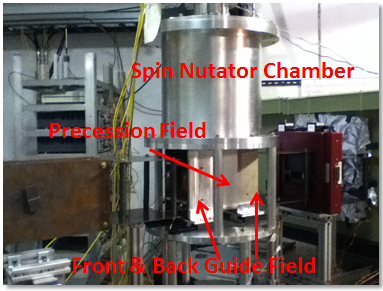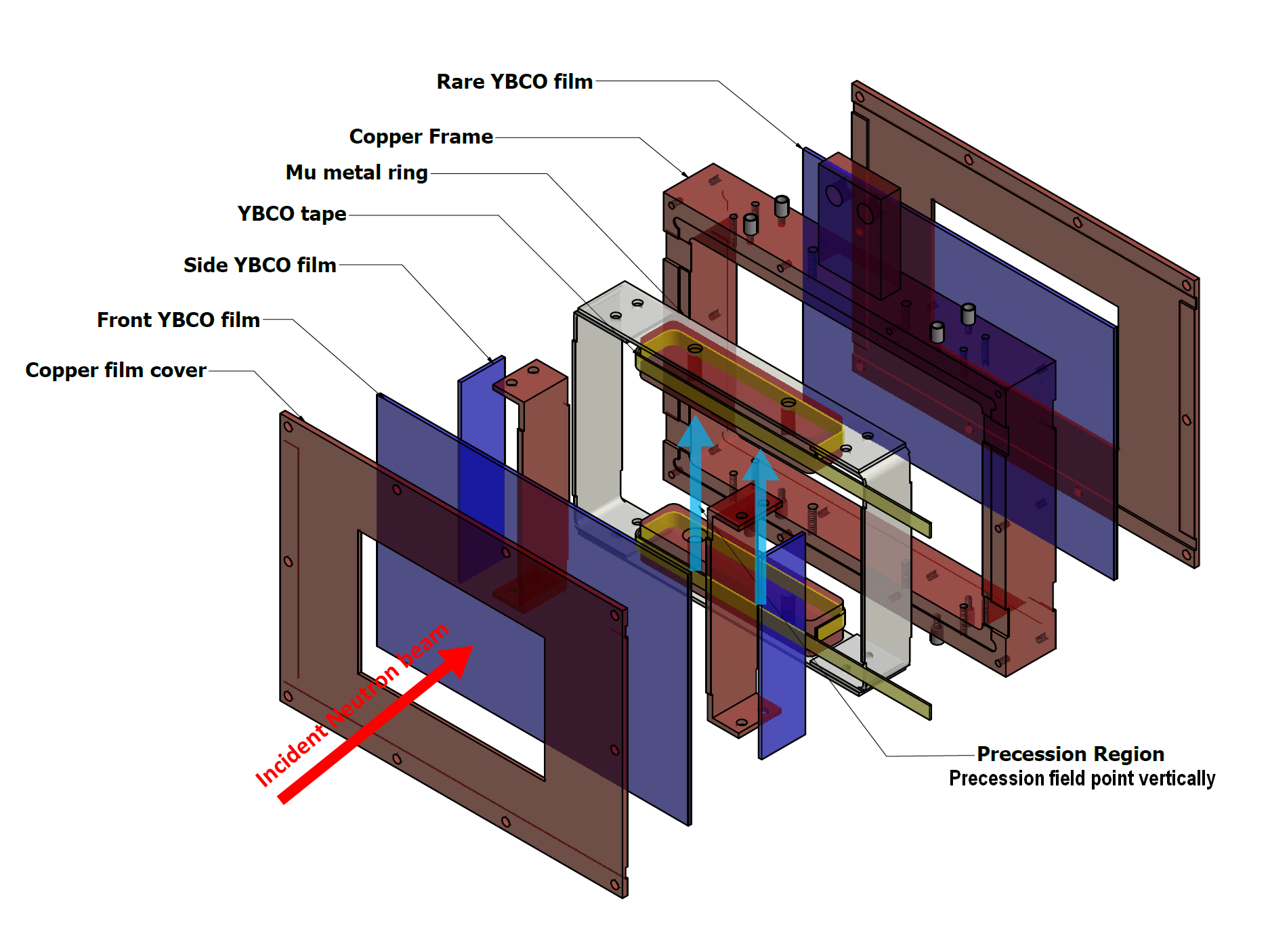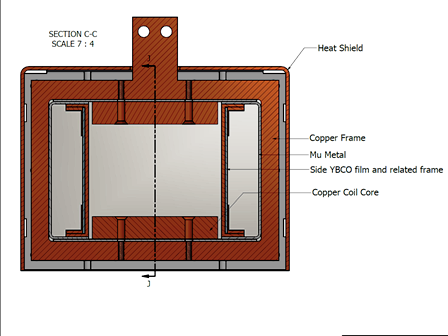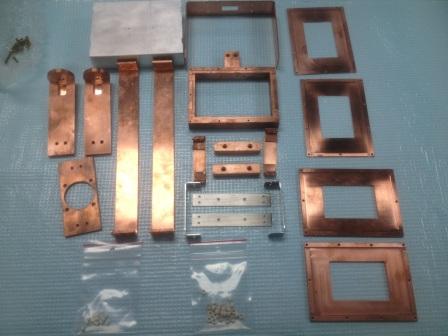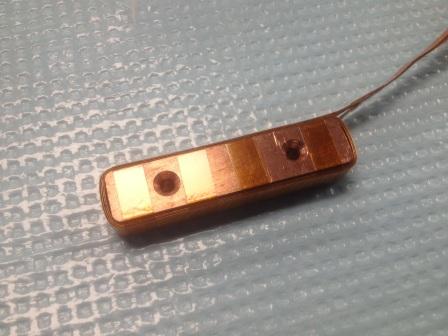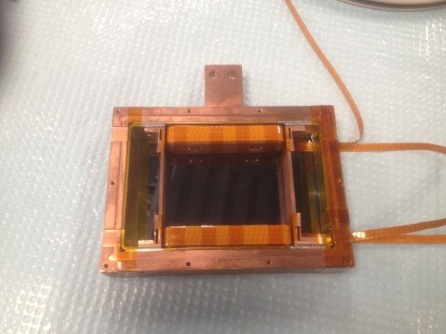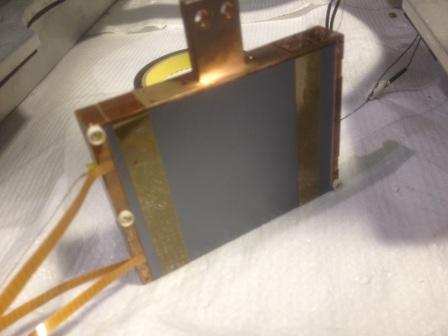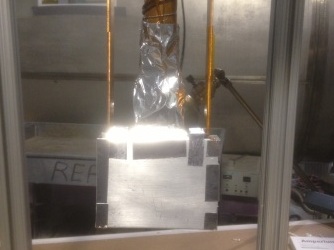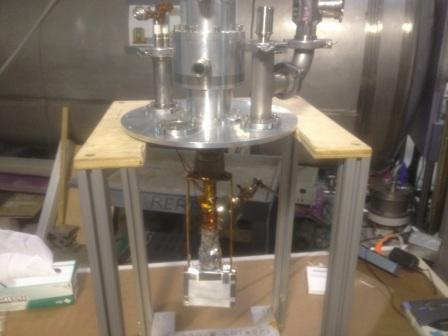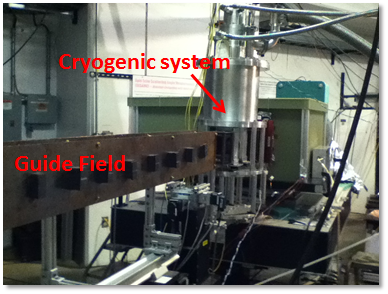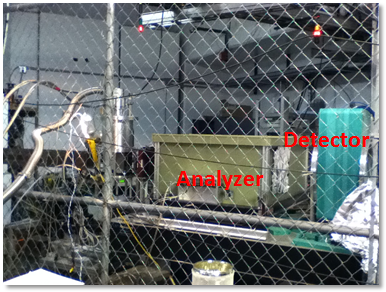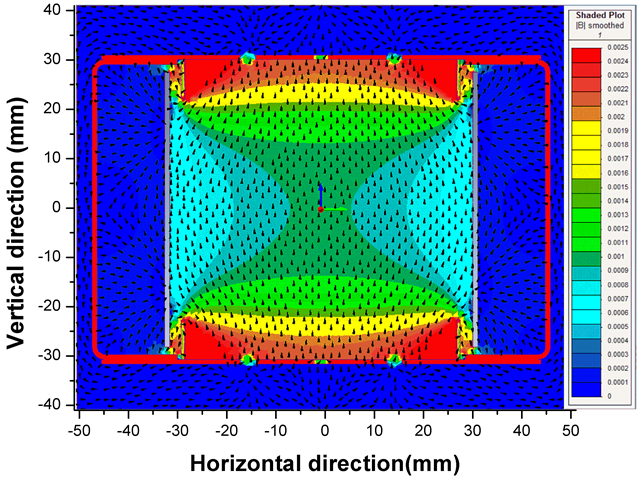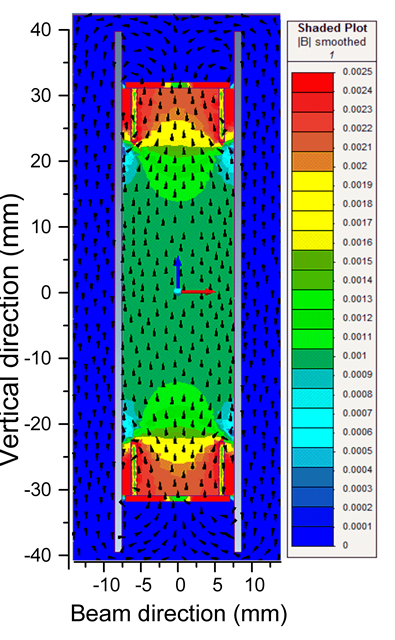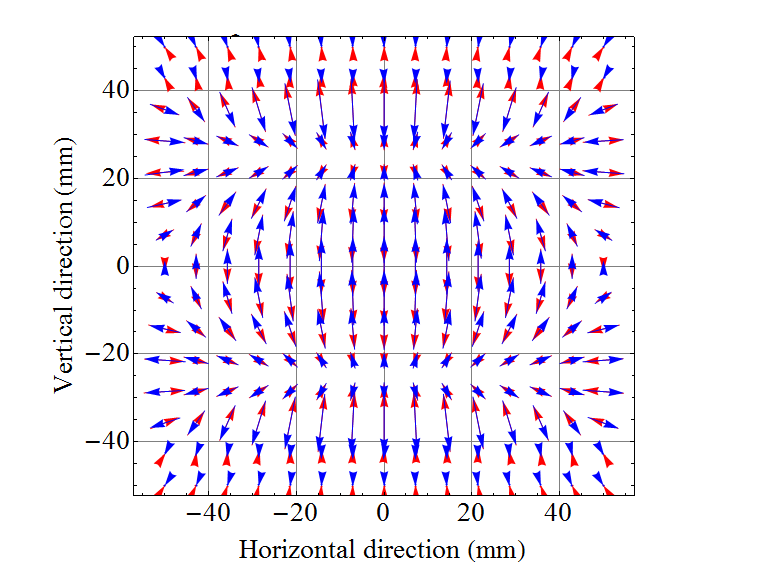Cryogenic Spherical Neutron Polarimetry Device (CryoCUP)
∗ This project is supported by the NSF
• Introduction
The unique properties of the neutron enable the measurement of complex magnetic structures. As most interactions between neutrons and atoms are fundamentally spin-dependent, the neutron scattering cross-sections may vary for different incident neutron polarizations, and the scattering process may change the neutron polarization. To obtain maximum information from a neutron scattering experiment, it is necessary to determine not only the initial and final energy and momentum of neutron, but also initial and final polarization.
Spherical Neutron Polarimetry (SNP) is a polarized neutron method that enables determination of both inital and final neutron polarization, and measures scattering cross-sections for different input and output polarization directions. This is usually achieved by using controled magnetic fields for neutron spin manipulation before and after scattering, and the Meissner effect to seperate different field regions.
The basic formula for Spherical Neutron Polarimetry was developed by Halpern and Johnson[1] in 1939, followed up by Blume[2] in 1963 and Maleyve[7] in 1999. Based these pioneer works, several SNP devices have been developed and put into use. The most successful SNP devices nowaday is the CryoPAD[3] at ILL, France, which was first used over 20 years ago. Another successful SNP device is the MuPAD[4] device at FRM-II, Germany.
Picture from Ref. 4, M. Janoshek (2007)
The figure shows the beamline configuration of a MuPAD devices and demonstrates the basic concept of SNP technology.
The direction of incoming polarization is defined by a coupling coil; using precession magnetic fields, the neutron spin polarization is shifted by δ and φ coils into the desired direction before scattering. The same configuration is applied after the scattering, to pick the final neutron polarization.
Our reseach goal is to develop a device for spherical neutron polarimetry that uses High Tc superconducting material (YBCO) for magnetic field shielding, coupled with a closed cycle refrigerators to simplify the design and make it cryogen-free.
• Spherical Neutron Polarimetry with Time of Flight
In a Time-of-Flight neutron experiment, precession fields create additional complications due to the varying neutron wavelength. Furthermore, when several Bragg peaks are recoreded simutaneuosly using a multi-detector, the relative oriantation of Q and the neutron spin direction varies, making the interpretation more complex. One goal of research target is to extend SNP to pulsed neutron sources.
<< Back to Top
• Preliminary Experiment
(Last Updated: Jan 2013)• Experiment Setup
A prototype nutron spin nutator device has been constructed and tested at the SESAME beamline in LENS, Indiana University. A supermirror bender is used as the incident beam polarizer, while spin exchange optical pumping of 3He is used as a polarization analyzer for the experiment.
The incoming neutron spin polarization is oriented parallel to the YBCO film surface. The Meissner effect ensures an abrupt change of the magnetic field direction so that the neutron starts to precess inside the device. Another abrupt field transition at the back of the precession field stops the neutron precession, and the spin polarization along the outgoing guide field direction is preserved and measured.
• Experiment Picture Gallery
<< Back to Top
• Simulation Results
To better understand the field configuration inside the device, we use Magnet©, which is a magnetic field simulation software based on the finite element method. Examples of simulation results are shown below.
Our preliminary experiment used a 20mm × 20mm beamsize. Based on the field simulation, we also calculated the field integral for diferrent paths and a field-vector plot. The field intergal determines the amount of spin precession while the vector plot allows us to look for depolarization effects..
• Experiment Result
As the SESAME instrument is a time-of-flight polarized neutron beamline, the normalized final polarization of neutron after precession is given by the following formula:
P/P0 ∝ (1 - a ·λ)· Cos(const · I· λ)
Where, P is the final polarization with current I through the precession coil, P0 is the polarization with no current through precession coil, and λ is the neutron wavelength.
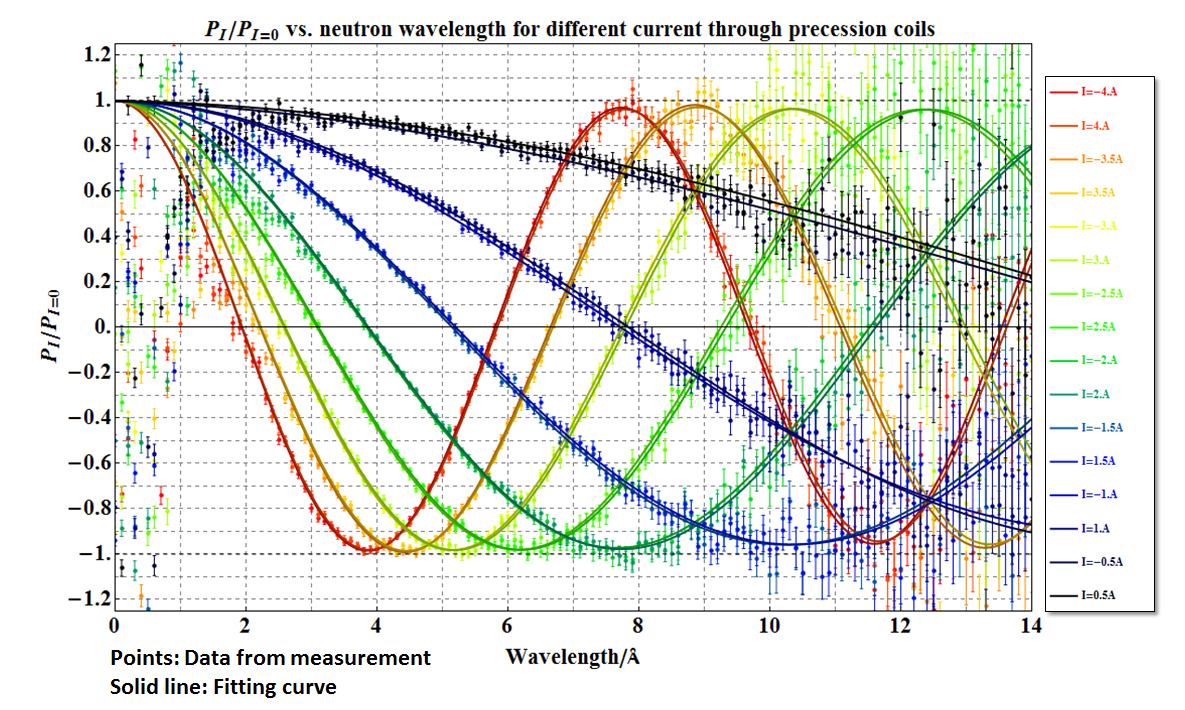
As shown in the graph, with decreasing precession current, the cosine polarization curves show a longer oscillation period.
It is also noticable that the curve for positive and negative current overlap each other.
The data collected during this experiment were also used to investigate the linearity between current and precession angle, as well as the depolarization due to change of beamsize. Based on the experiment result, we concluded:
• It is feasible to use YBCO superconducting films as a magnetic field shield to isolate the precession region from outer field
• By adjusting the current going through coil, we are able to control the precession angle.
• The dephasing factor of < 2% for 20mm × 20mm beamsize indicates that the nutator is suitable for our future development
References:
1. On the Magnetic Scattering of Neutrons; O. Halpern and M.H. Johnson; Physical Review (1939), Vol. 510, 898 - 923.
2. Polarization Effects in the Magnetic Elastic Scattering of Slow Neutrons; M. Blume; Physical Review (1963), Vol. 130, 1670 - 1676.
3. Spherical neutron polarimetry with Cryopad-II; F. Tasset, P.J. Brown, E. Lelie`vre-Berna, et al.; Physica B 267 - 268, (1999), 69 - 74.
4. Spherical neutron polarimetry with MuPAD; M. Janoschek, S. Klimko, el.at; Physica B 397, (2007), 125 - 130.
5. Magnetic diffuse scattering in disordered systems studied by neutron polarization analysis; J. R. Stewart, K. H. Andersen, el.at; JOURNAL OF APPLIED PHYSICS, Vol. 87, Num. 9, (2000).
6. The XYZ - Difference Method with Polarized Neutrons and the Separation of Coherent, Pin Incoherent, and Magnetic Scattering Cross Sections in a Multidetector; O. Schãpf, H. Capellmann; Physica Stat. Sol. 135, 359, (1993).
7. Nuclear-magnetic interference in the inelastic scattering of the polarized neutrons; S.V. Maleyev; Physica B 267 - 268, (1999) 236 - 242
Related Resources:
• Seminar Powerpoint - Development of Spherical Neutron Polarimetry Device ; T. Wang, R. Pynn; Ph.D. Candidancy Seminar Talk, Indiana University Bloomington, (2012).
• Design schematics of CryoCUP Devices. (Available upon requested).
Detailed design and experiment result available upon request, please contact Prof. Roger Pynn
<< Back to Top

